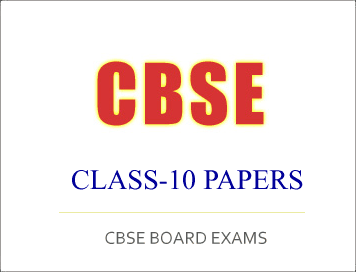
(Download) CBSE Class-10 Sample Paper And Marking Scheme 2019-20:
Front Office Operations
(Front Office Operations)
SECTION –A
Tick the correct answer (1mark each).
Answer any 10 questions out of the given 12 questions:
1.Information transferred in one direction is called
(a) Informal communication
(b) Formal communication
(c) One way communication
(d) Two way communication
2. __________ is the process by which information is organized into symbols that can be 1 conveyed to the receiver.
(a) Decoding
(b) Transmission
(c) Encoding
(d) Receiving
3. What is the capital of Indonesia?
(a) Male
(b) Jakarta
(c) Tehran
(d) Kabul
4. What is the currency of Bangladesh?
(a) Dinar
(b) Yen
(c) Yuan
(d) Taka
5. Which of the following is the code of Saudi Arabian Airline?
(a) SV
(b) SA
(c) SY
(d) AS
6. Hygiene is a word which comes from the name of the ______ goddess of health
(a) Spanish
(b) French
(c) Greek
(d) Italian
7. Which is the most important skill required while giving information to the guest?
(a) Positive attitude
(b) Punctuality
(c) Communication
(d) Pleasing personality
8. Which section of the front office is responsible for carrying the luggage of guest to room?
(a)Information desk
(b) Bell desk
(c) Guest relation desk
(d) Concierge
9. Which department is responsible for giving room keys to the guest on his arrival?
(a) Reception
(b) Reservation
(c) Cashier
(d) Travel desk
10. Who heads the front office department of a small hotel?
(a) Front office Assistant
(b) Front office Manager
(c) Reservation supervisor
(d) Front office supervisor
11 . Proper collection of the data in computers is called…..
(a) Information
(b) Program
(c) Software
(d) Hardware
12. The speed of computer is calculated in
(a) Gigabyte
(b) MHz
(c) Kilobyte
(d) Megabyte
Very ShortQuestions: (2 marks each).
Answer any 5 questions out of the given 7 questions:
13. Enlist the various basic components of communication? 2
14. Differentiate between intrapersonal communication and interpersonal communication? 2
15. Write any four advantages of reading newspaper? 2
16. How newspaper can be used as job portal? 2
17. Briefly explain the importance of hygiene in maintaining good health? 2
18. What are the social benefits of maintaining good hygiene? 2
19. List the main duties of concierge in front office department? 2
ShortQuestions: (3 marks each).
Answer any 5 questions out of the given 7 questions:
20. Differentiate between content and context? 3
21. Write any three advantages of written communication? 3
22. Briefly explain any six positive effects of good grooming in the hospitality industry? 3
23. Enlist any six hygiene standards for male and female staff of front office department? 3
24. Briefly explain any six qualities of front office staff? 3
25. Write any six features of a hotel lobby? 3
26. Briefly explain any six advantages of computer? 3
SECTION –B
Long/Essay type questions (5 marks each).
Answer any 3 questions out of the given 5 questions:
27. “Newspaper is an important tool in the learning process for front office professional.” Explain any five points to justify the statement? 5
28. Mention any five functions of below mentioned sections of front office?
(a) Telephone Exchange
(b) Reservation
(c) Information desk
29. Draw the organization chart of front office department of a medium hotel? 5
30. Explain any six characteristics of computer? 5
31. Explain the role of computer in the below mentioned hotel departments? 5
(a) Front desk
(b) Housekeeping
(c) Reservation
